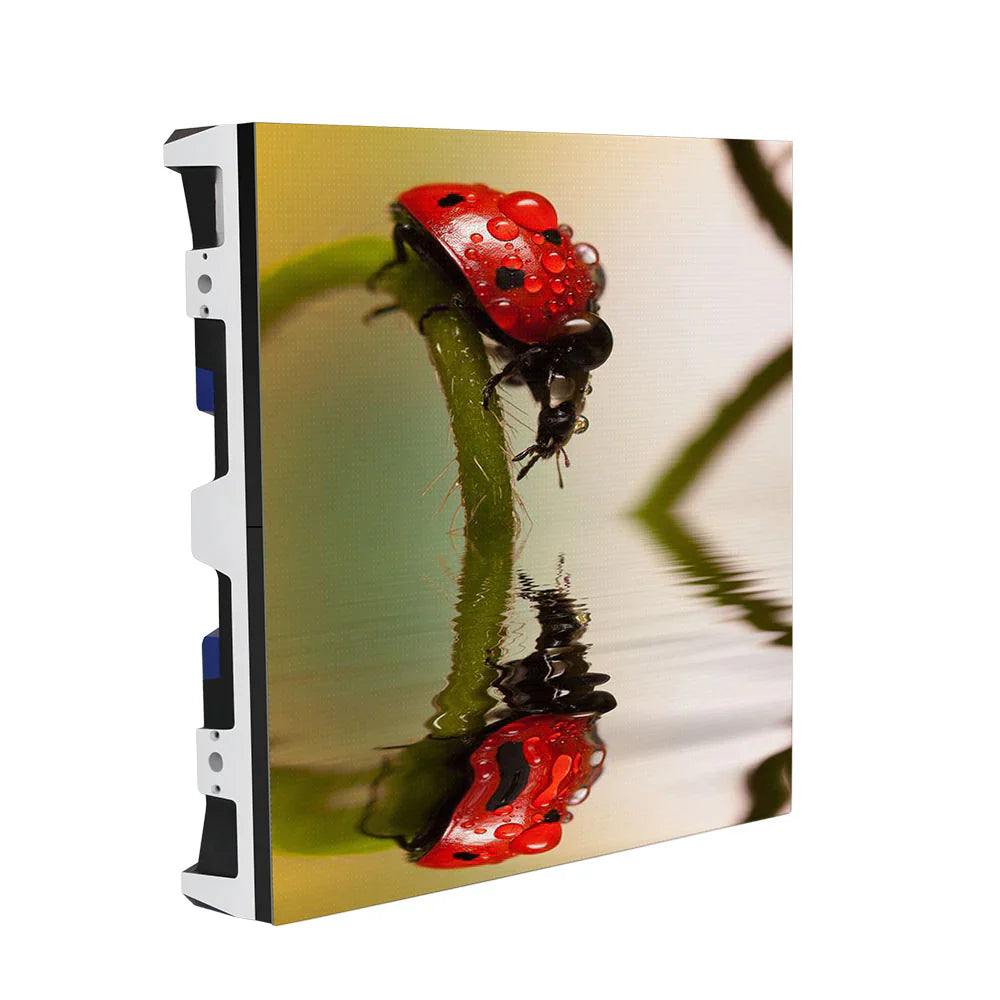In stage performances, exhibitions, sports events, and brand launch shows, LED rental screens have become an essential part of modern visual display systems. They not only determine the atmosphere and clarity of on-site visuals but also affect installation efficiency and transportation safety.
So, what makes a rental LED screen “high-quality”?
This article provides a comprehensive analysis from four aspects — structure design, pixel configuration, display performance, and portability — helping you choose the ideal LED rental screen for your next event.
1. Structure Design: Durable, Lightweight, and Easy to Maintain
The structure is the “skeleton” of a rental LED screen, directly affecting its stability, mobility, and lifespan.
High-quality rental screens generally have the following characteristics:
-
Lightweight Aluminum Cabinet
Most premium rental displays use die-cast aluminum cabinets, combining strength and light weight. This design makes installation faster and reduces labor and shipping costs.
Typically, each cabinet weighs only 7–10 kg, offering excellent corrosion resistance and long-term durability. -
Modular Design for Quick Maintenance
Modular construction allows front and rear access, making it easy to replace LED modules or power supplies on-site.
In addition, high-precision locking systems (such as quick locks or corner locks) ensure seamless alignment and greatly improve setup efficiency. -
Enhanced Protection and Weather Resistance
Outdoor rental screens should feature IP65 or higher waterproof and dustproof ratings, ensuring reliable operation in harsh conditions like rain or wind.
Indoor models, on the other hand, emphasize anti-collision and scratch resistance, maintaining a clean, professional appearance even after frequent use.
2. Pixel Pitch: Balancing Clarity and Viewing Distance
Pixel pitch refers to the distance between the centers of two adjacent pixels, measured in millimeters (mm).
The smaller the pitch, the higher the image resolution — but also the higher the cost.
1. Indoor Applications: P1.9 – P3.9 for Best Results
For close-viewing environments such as conference rooms, studios, and exhibition halls, pixel pitches between P1.9 and P3.9 provide the perfect balance between clarity and affordability.
These screens deliver fine details, sharp text, and high-definition visuals for short viewing distances.
2. Outdoor Applications: P3.9 – P5.9 as the Optimal Range
For outdoor stages, concerts, and public events, where viewers stand farther away, P3.9, P4.8, and P5.9 models are ideal.
They provide excellent brightness, cost efficiency, and energy performance for dynamic, large-scale displays.
3. GOB Technology: Enhanced Durability
For high-frequency rental use, GOB (Glue On Board) protection offers extra reliability. It covers LED beads with a transparent epoxy layer, preventing moisture and impact damage — perfect for long-term, rugged use.
3. Display Performance: Refresh Rate, Brightness, and Color Accuracy
Display performance determines how vivid and stable the visuals appear on screen. Top-tier rental LEDs excel in the following areas:
-
High Refresh Rate (≥3840Hz)
A high refresh rate eliminates flicker in camera recordings and live broadcasts, ensuring smoother transitions and professional-quality visuals. -
High Brightness with Adaptive Control
Outdoor models often reach 5000–6000 nits, remaining visible under strong sunlight.
Indoor models generally range from 800–1500 nits, and some include automatic brightness adjustment to maintain comfort and efficiency. -
Accurate Color Reproduction
With 16-bit grayscale processing and advanced IC drivers, colors appear rich, consistent, and lifelike — without banding or distortion.
4. Portability and Installation: Efficiency That Reduces Costs
Since rental screens are moved and reassembled frequently, portability and installation convenience directly affect total project costs.
Top-quality rental screens feature:
-
Standard cabinet sizes (500×500mm or 500×1000mm) for easy splicing;
-
Flexible mounting options, including hanging and stacking structures;
-
Compatibility with control systems like NovaStar or Colorlight;
-
Smart positioning and precision locks to ensure fast, seamless alignment.
In addition, professional suppliers often provide shockproof flight cases, which protect the screens during long-distance transportation — reducing downtime and maintenance costs.
5. Buying Advice: Match Performance to Your Application
When choosing a rental screen, avoid focusing solely on price. Instead, evaluate:
-
Indoor or outdoor usage
-
Viewing distance and clarity requirements
-
Installation frequency and handling convenience
-
After-sales support and technical reliability
For different applications such as concerts, exhibitions, conferences, and live events, the following models are highly recommended:
| Product Name | Application | Pixel Pitch | Cabinet Size | Learn More |
|---|---|---|---|---|
| Tour Outdoor Rental LED Display | Outdoor stage / festival / live event | P3.9 / P4.8 / P5.9 | 500×500mm aluminum cabinet | View Details |
| Tour Indoor Rental LED Display | Indoor conference / studio / exhibition | P1.95 / P2.6 / P2.9 / P3.9 / P4.8 | 500×500mm aluminum cabinet | View Details |
| Tour GOB Series Rental LED Display | Indoor rental with high protection / premium events | P1.95 / P2.6 / P2.9 / P3.9 | 500×500mm aluminum cabinet (GOB Protection) | View Details |
Conclusion: High-Quality Rental Screens Define the Visual Experience
A high-quality rental LED screen is more than just equipment — it’s the foundation of an outstanding visual experience.
It affects everything from setup efficiency to audience engagement and brand professionalism.
By choosing a display that is sturdy in structure, precise in pixel, reliable in performance, and easy to transport, you can ensure every event runs smoothly and leaves a lasting impression.
Whether for large-scale concerts or business exhibitions, a premium rental LED screen is the key to delivering a spectacular visual performance.

